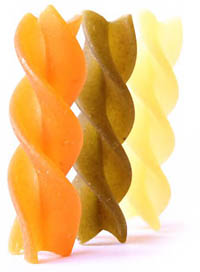28-Days-to-Lean Meal Plan
With the right plan and the right discipline, you can get seriously shredded in just 28 days.
Read articleWelcome to Week 2's edition of M&F/Q&A, in which Justin Grinnell B.S., CSCS, NASM-CPT answers questions you post to our Facebook page. Every Thursday you can find a new thread on Facebook in which we ask for your training and nutrition questions, answering three of them right here the following Thursday.
So, start asking over at our Facebook thread now, and check out our answers to last week's questions below.

While all of these techniques are valuable when trying to bulk up or getting cut, there are benefits to using them in different training phases. Lifting techniques like supersets and drop sets usually require less rest, which can cause a great fat burning response, making them very useful during a cutting phase.
Using negative reps help build strength, thus helping you lift heavier weight to build more muscle. Using short rest periods during your sets with a rep range of 8-15 with heavy weight will be best for your cutting phase. A rep range of 6-12 reps using heavy weight, slower negative reps, and longer rest periods will produce some good hypertrophy. In the end, your nutritional intake will be the best factor when gaining mass or getting cut.
CARB CYCLING VS. FULL KETOSIS
During my cutting season I have mainly done carbohydrate cycling. However, I have heard some interesting results from going into full ketosis. What are the pros and cons of ketosis, and which will make the cutting phase easier to deal with? –Kyle Rudolph

Going into full ketosis can cause some unwanted side effects such as fatigue, acidity in the blood, and headaches. These can be tough to deal with during your cutting phase when working out, and when calories are already low.
The greatest weight loss will occur in the first few weeks of the ketogenics diet. While many will see dramatic results quickly, weight loss may plateau. Although effective, it can be hard to maintain for extended periods of time. Cycling your carbohydrate intake will be much easier to manage your long-term health, and can still produce great results.
If you decide to use a ketogenic diet to get ripped, choose to do it in the first 2-3 weeks of your cutting phase to jumpstart your diet. Then use carb cycling for the bulk of your diet. Ketogenic diets are also useful at the end of your cutting phase to help get rid of the remainder of your body fat before a competition or special event.
KETTLEBELLS
How can you incorporate dynamic kettlebell workouts into a traditional bodybuilding split? –Con Dellis

Incorporating kettlebells into their routine will improve anyone's traditional bodybuilding split. Kettlebells improve dynamic power, grip strength, core strength, and conditioning.
A kettlebell can be used to perform many lifts that are usually done with a dumbbell. You can also perform a kettlebell-conditioning workout on an off lifting day, or in place of traditional cardio for fat loss. Below is a list of a few alternative exercises using a kettlebell instead of a dumbbell, and a conditioning circuit to be employed on an off lifting day, or in place of cardio.
Kettlebell Alternatives to Dumbbell Exercises
• Seated Overhead Press Kettlebell Push Press
• Upright Row Kettlebell High Pull
• Straight Leg Deadlift Kettlebell Swing
• Front Squats Kettlebell Goblet Squats
Off-Day/Cardio Conditioning Circuit
Kettlebell Swings
Kettlebell Cleans
Kettlebell High Pulls
Kettlebell Snatch
Kettlebell High Pull, Squat, and Press
Note: Use the same weight for all exercises. Perform 3-5 rounds of 10-15 reps each depending on conditioning level.